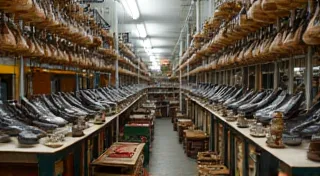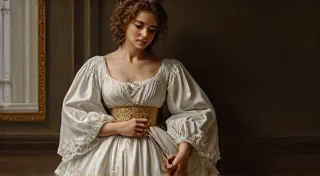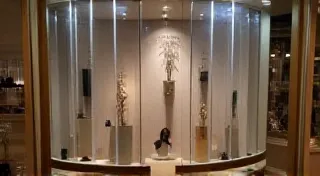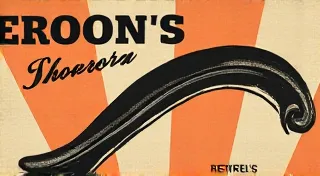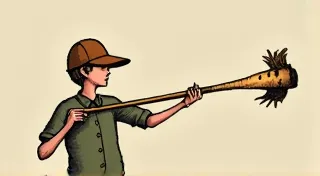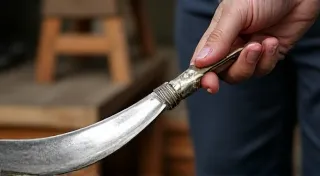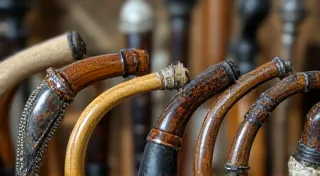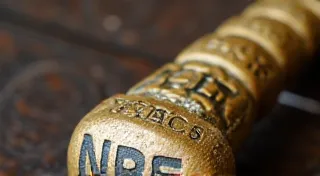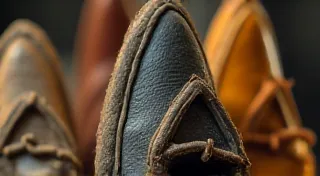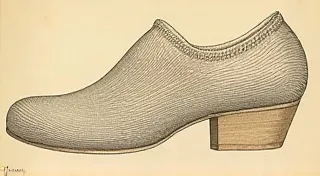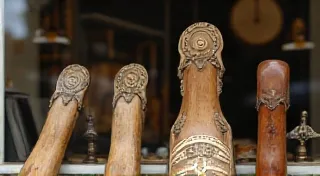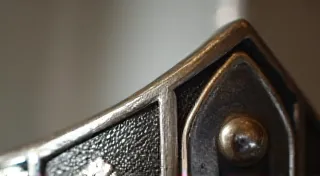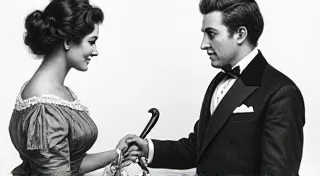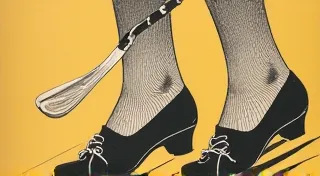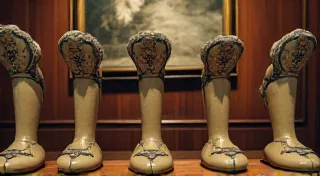Collecting Vintage Shoehorns: A Guide for Enthusiasts
Welcome to the fascinating world of vintage shoehorns! Often overlooked today, these elegant accessories offer a unique window into the history of fashion, design, and social customs. More than just tools for easing footwear onto the foot, vintage shoehorns represent a bygone era of refinement and thoughtful detail. This website is your comprehensive guide to collectible accessories, delving into the rich fashion history surrounding these charming objects, and providing the information you need to start, expand, or simply appreciate your own collection. We’d be exploring the societal and artistic impact of a tool that, for a period, became an emblem of status and sophistication, and how it intertwined with the evolving landscape of personal style and cultural nuances.
For centuries, putting on shoes was a delicate operation, often requiring assistance. The shift towards more fitted and intricate footwear designs, particularly during the 18th and 19th centuries, necessitated a specialized tool to prevent damage to delicate uppers and linings. The humble shoehorn emerged as the solution, rapidly ascending to the status of a cherished possession. Initially simple and utilitarian, shoehorns soon began to be crafted from a variety of materials and adorned with elaborate designs, transforming them from functional tools into works of art. To understand this journey, explore "The Rise of the Shoehorn: A Fashion Essential Through the Ages" for a detailed look at their place in history. It's a story of evolving footwear technology and the elegant tools developed to accommodate it, revealing the complex interplay of practicality and aesthetics throughout history. The narrative goes beyond the mere function of assisting in putting on shoes; it unveils a cultural phenomenon reflective of societal values and changing fashion trends across different periods.
What Makes a Vintage Shoehorn Special?
What defines a truly desirable vintage shoehorn? Several factors contribute, transforming a simple tool into a treasured heirloom. The age of the shoehorn is undeniably important, with earlier examples generally commanding higher value due to their rarity and historical significance. The materials used in its construction also play a crucial role. Precious metals like silver and gold, embellished with intricate engravings or inlays of gemstones, drastically increase the value. Exotic woods like ebony or rosewood, showcasing the mastery of wood carving techniques, also contribute to desirability. Shoehorns crafted from ivory, though now ethically questionable and subject to stricter regulations, hold historical interest, especially if they exhibit exceptional craftsmanship.
The design itself is another key factor. Shoehorns exhibiting unique or innovative designs, showcasing the creativity of the artisan, are highly sought after. Those bearing hallmarks of renowned designers or manufacturers further enhance their value. The condition of the shoehorn is paramount; those in excellent condition, free from significant damage or restoration, are naturally more desirable. However, even those exhibiting some signs of age and wear can be highly valuable if they retain their original character and charm. Finally, the provenance of the shoehorn—its documented history of ownership—can significantly impact its value, especially if it can be traced to a prominent individual or historical event. Shoehorns frequently given as treasured gifts—explore "Shoehorns as Gifts: A Victorian Tradition" to understand this charming custom. The gift-giving practice was often steeped in symbolism, with the shoehorn representing prosperity, good fortune, and a smooth path through life.
Materials, Makers, and Markings
Identifying the materials used in a shoehorn’s construction is essential, both for historical context and for assessing its value. "Identifying Antique Shoehorn Materials: Ivory, Wood, Metal & More" provides a comprehensive guide to recognizing different materials and understanding their significance. Recognizing maker's marks is equally important. "The Markings on Vintage Shoehorns: Understanding Hallmarks and Makers" explains how to decipher these clues, which can help you trace a shoehorn's origins and determine its authenticity. The quality of materials wasn’t just about the inherent value but also about the skill involved in working with them. For example, the ability to carve intricate patterns into ebony or to perfectly polish silver required a high level of expertise. Hallmarks aren’t just identifying marks; they are miniature testaments to the artisan’s craftsmanship and reputation. The existence of a prominent hallmark often implies a guarantee of quality and design. Many early designs benefited from clever innovations— explore "Shoehorn Patents: A Look at Early Innovations" for a look at some remarkable early solutions to practical design challenges.
Beyond Function: History and Social Significance
The history of the shoehorn intertwines with broader social trends. They weren't merely tools; they were status symbols. "Shoehorns and Social Class: A Symbol of Refinement" explores how these accessories became markers of wealth, taste, and sophistication. During the Victorian era, for example, owning a beautifully crafted shoehorn was a subtle way of signaling one's social standing. The material, design, and even the way one handled the shoehorn contributed to the overall impression of refinement. They were often presented as gifts on special occasions – weddings, engagements, and coming-of-age ceremonies – further cementing their association with important milestones and social gatherings. You might be surprised by who owned them! "Famous Shoehorn Owners: Celebrities and Historical Figures" reveals some fascinating names associated with these stylish accessories, providing glimpses into the lives and tastes of individuals who helped shape history. The ownership of such items reflects not just wealth, but also the values and aesthetic preferences of the elite.
Beyond their primary function, vintage shoehorns have had other surprising uses throughout history. “Beyond the Foot: Other Uses for Vintage Shoehorns" uncovers these lesser-known applications, offering a glimpse into the ingenuity of past generations. Some were adapted for use as letter openers or even as decorative objects. They were often part of a larger, luxurious lifestyle, especially when attending the opera - explore "The Shoehorn and the Opera Box: A Luxurious Pairing" to understand this connection. The opera box represented the pinnacle of social prestige, and the presence of a beautiful shoehorn was a subtle but important detail contributing to the overall impression of elegance and refinement.
Finding, Caring For, and Appreciating Your Collection
So, you’re ready to start (or expand) your collectible accessories collection? “Where to Find Vintage Shoehorns: Auction Houses, Antique Shops & Online” provides a guide to the best places to source these treasures. When searching for a vintage shoehorn, be prepared to spend time and effort. Antique shops, estate sales, and online auctions are all potential sources. Carefully examine any potential purchase, paying close attention to its condition and authenticity. A magnifying glass can be invaluable for scrutinizing hallmarks and identifying any signs of damage or restoration. Once acquired, proper shoehorn care is essential to preserving their beauty and value. “Caring for Your Vintage Shoehorn Collection: Preservation Tips” offers practical advice on cleaning, storage, and handling these delicate objects. Proper storage, away from direct sunlight and extreme temperatures, is crucial for preventing damage. Regular cleaning with a soft cloth can remove dust and grime. Avoid harsh chemicals or abrasive cleaners, which can damage the finish. The evolution of their design also tells a story— "The Rise and Fall of the Telescopic Shoehorn: A Design Innovation" examines a clever, albeit short-lived, solution to portability. And, of course, women's footwear has its own history, influencing the design of their accessories—discover the topic by visiting "The Evolution of Women's Shoehorns: Form and Function".
Handles, Variations, and Advertising
Details matter! "Shoehorn Handles: Materials and Embellishments" explores the artistic choices behind the handles that add character to these pieces. The handle wasn't just a functional element; it was an opportunity for artistic expression. Intricate carvings, precious stone inlays, and delicate metalwork transformed the handle into a miniature work of art. For those seeking truly unique finds, "Beyond the Basics: Unusual and Rare Shoehorn Variations" showcases exceptional and hard-to-find examples. The variations in design and materials reflect the creativity and ingenuity of different artisans and workshops. Finally, understanding how they were marketed through the years adds another layer of appreciation— explore "Shoehorn Advertising Through the Decades: A Historical Look" for insights into their appeal to consumers. Advertising campaigns revealed not only the product's utility but also the social aspirations it represented. The advertisements frequently associated the shoehorn with sophistication, luxury, and a refined lifestyle.
The world of vintage shoehorns offers a fascinating glimpse into the past, revealing a surprising amount about fashion, social customs, and artistic craftsmanship. By understanding the history, materials, and design elements of these elegant accessories, you can gain a deeper appreciation for their enduring appeal.
We hope this guide provides a comprehensive introduction to the captivating world of vintage shoehorns. Happy collecting!

